Drive-by culture: monuments you can see by road, rail or water
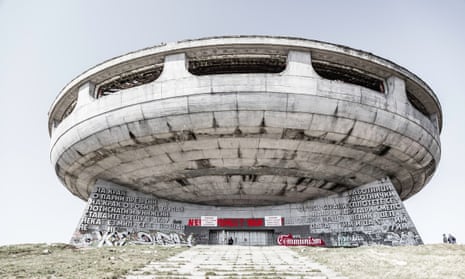 [1] This article is more than 2 months old
[1] This article is more than 2 months oldDrive-by culture: monuments you can see by road, rail or water
This article is more than 2 months oldFrom Welsh castles to an unearthly Soviet monument in Bulgaria, these beautiful sites can be viewed on your travels for free
Campaigners will come together in the high court on Tuesday in a bid to thwart the government’s plan to build a two-mile road tunnel close to the great circle of Stonehenge.
If the bid is unsuccessful, the stones will no longer be visible from the road. Here are some sites you can still see on your travels.
Durham Cathedral, England
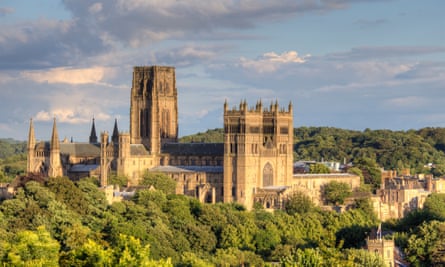 [3]
[3]Part of the Stonehenge magic is the reveal, the moment of drama. On an uncluttered horizon, from an ancient road (now called the A303), comes the familiar outline. It is one of those moments when you gasp and point, like you just spotted a Hollywood star in the corner shop. All previous impressions are forgotten in the flesh-and-blood reality.
The East Coast mainline railway has many such powerful moments: the abrupt appearance of the North Sea near Alnmouth, or the sudden vertigo as you rattle across Newcastle’s King Edward VII bridge with the River Tyne below.
Best of all, however, is the splendour of Durham Cathedral, sailing past your window like some medieval stone galleon in full sail, an 11th-century masterpiece containing the shrine of Saint Cuthbert[4].
In legend, monks fleeing Viking attacks carried his relics to this spectacular location on the River Wear, where the saint was said to have rendered his coffin unmoveable, as if Cuthbert knew what his legacy required.
Statue of Liberty, Liberty Island, New York Bay, US
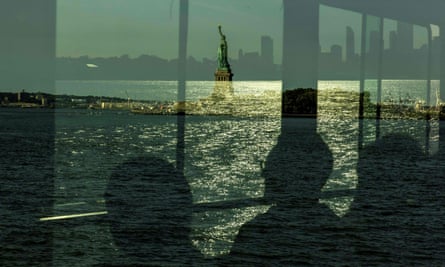 [5]
[5]Frederic Bartholdi’s 1886 statue packs a symbolic energy similar to those lintelled sarsen stones in Wiltshire. Take the public ferry to Manhattan Island, either from Red Hook in Brooklyn or New Jersey, and the 46-metre tall (151ft) monument appears, welcoming arrivals to the new world.
Even the construction of this great symbol of freedom was a triumph of hope over cynicism, funded largely by small donations, many less than a dollar.
Giza pyramids, Memphis, Egypt
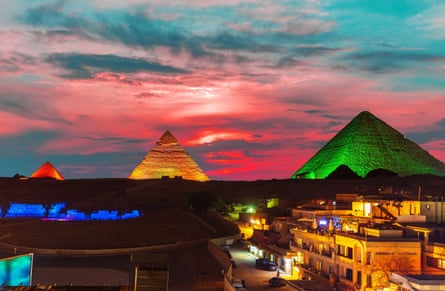 [6]
[6]One of the planet’s most familiar outlines and certainly one of its most durable, the pyramids of Giza are close to Cairo, part of the world heritage site Memphis and its Necropolis, and are easily approached by car.
New buildings, trees, towers – they all try to interfere with the view, but the pyramids rise above everything.
The Great Pyramid was the tallest human-made structure on Earth for almost 4,000 years and its scale, size and antiquity still thrill.
skip past newsletter promotionafter newsletter promotion
[7]Buzludzha monument, Kazanlak, Bulgaria
 [8]
[8]Unsung and obscure, this Bulgarian Communist party HQ from 1981 will no doubt one day be recognised as a futurist masterpiece, its outline rather like a huge aircraft control tower, symbolic of a hope that humanity once placed in concrete and a certain kind of technology.
It stands like some vast ancient folly on top of a barren 1,432-metre (4,700ft) summit east of the Shipka Pass in the Bulgarian mountains, like Stonehenge unsullied by any surrounding features. You catch tantalising glimpses as you motor north along the mountain highway to Romania.
Not so long ago, adventurous travellers could climb inside and see the huge mosaics constructed from 35 tons of cobalt glass – Karl Marx staring at you like some Ozymandias. Now they are being preserved and restored for a future opening as a visitor attraction.
Howrah Bridge, Kolkata, India
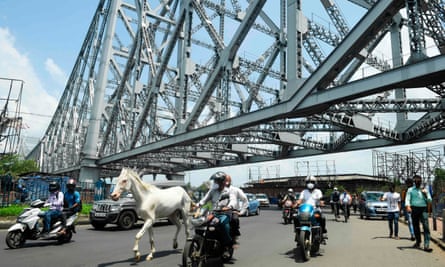 [9]
[9]It lacks that familiar silhouette when glimpsed from afar but, of all India’s huge monuments, Howrah is perhaps the most impressive, best approached by ferry down the Hooghly River or along the riverbank. It emerges slowly from the haze and the scale is staggering, standing 82 metres (269ft) high, with a span of almost half a kilometre (1,500ft).
It certainly has that gravitational power of a great monument, somehow drawing everything and everyone towards it.
Conwy castle, Wales
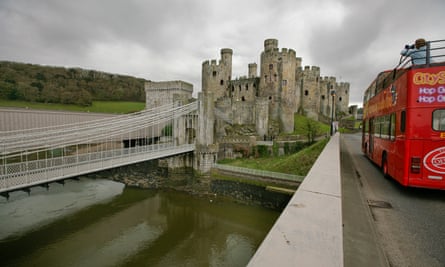 [10]
[10]Travel along the north coast of Wales on the A547 and this magnificent castle stands in your way. You almost smash against its massive curtain wall, which of course was exactly what Edward I intended, an overwhelming display of power and strength.
With eight towers and two barbicans, standing right on the River Conwy, the 13th-century stronghold is a superb world heritage site.
Explore more on these topicsReuse this content[15]References
- ^ (www.theguardian.com)
- ^ Stonehenge campaigners’ last-chance bid to save site from road tunnel (www.theguardian.com)
- ^ (www.theguardian.com)
- ^ 11th-century masterpiece containing the shrine of Saint Cuthbert (whc.unesco.org)
- ^ (www.theguardian.com)
- ^ (www.theguardian.com)
- ^ skip past newsletter promotion (www.theguardian.com)
- ^ (www.theguardian.com)
- ^ (www.theguardian.com)
- ^ (www.theguardian.com)
- ^ Architecture (www.theguardian.com)
- ^ Heritage (Culture) (www.theguardian.com)
- ^ Heritage (Travel) (www.theguardian.com)
- ^ news (www.theguardian.com)
- ^ Reuse this content (syndication.theguardian.com)